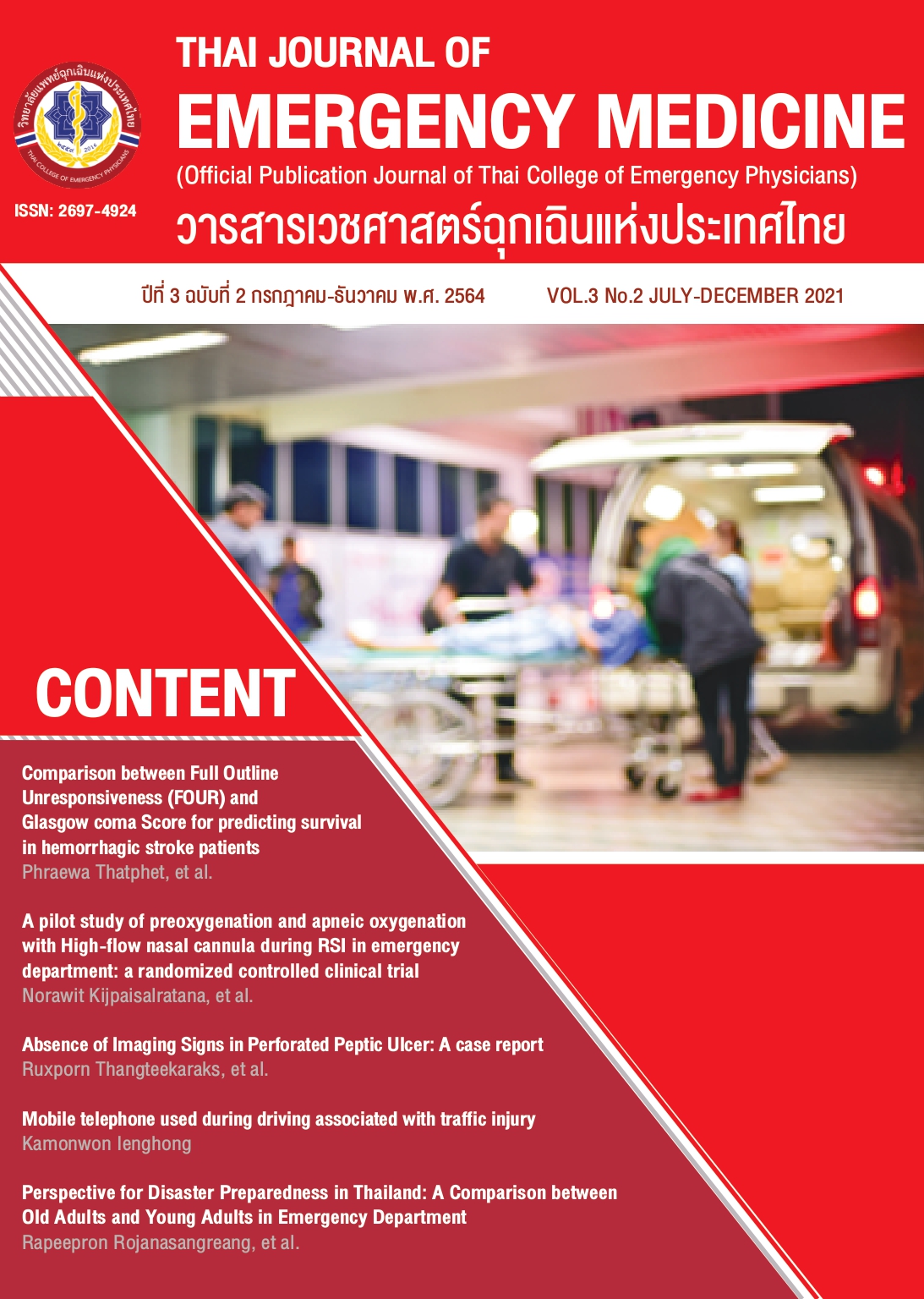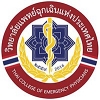Absence of Imaging Signs in Perforated Peptic Ulcer
Keywords:
perforated peptic ulcer, peptic ulcer, absence, maging signAbstract
Perforated peptic ulcer (PPU) is a serious complication of peptic ulcer disease (PUD) that carries a risk of mortality of up to 30%. Early recognition, adequate resuscitation, and prompt surgical intervention are essential to provide good outcomes. Imaging such as plain film and computed tomography (CT) are frequently used for diagnosis confirmation. Herein, we reported a case of a 55-year-old man who presented with acute abdominal pain five hours before ED arrival. Physical examination showed a flat abdomen without surgical scarring and there was board-like rigidity on palpation. Acute abdominal series revealed no intra-abdominal free air. Subsequent abdominal CT scan with contrast also revealed no pneumoperitoneum. However, he was undergoing surgical intervention based on his clinical features that suggested PPU. The intra-operative finding showed a perforated pre-pyloric ulcer. He was discharged after five days of hospitalization without any complications. This case highlights the significance of clinical signs and symptoms and not solely relying on imaging findings.
References
Møller MH, Adamsen S, Thomsen RW, et al.: Multicentre trial of a perioperative protocol to reduce mortality in patients with peptic ulcer perforation. Br J Surg. 2011;98(6):802–10.
Chung KT, Shelat VG: Perforated peptic ulcer - an update. World J Gastrointest Surg. 2017;9(1):1.
Søreide K, Thorsen K, Harrison EM, et al.: Perforated peptic ulcer HHS Public Access. Lancet. 2015;386(10000):1288–98.
Thorsen K, Glomsaker TB, Meer A von, et al.: Trends in Diagnosis and Surgical Management of Patients with Perforated Peptic Ulcer. J Gastrointest Surg. 2011;15(8):1329–35.
Picone D, Rusignuolo R, Midiri F, et al.: Imaging Assessment of Gastroduodenal Perforations. Semin Ultrasound, CT MRI. 2016;37(1):16–22.
Coppolino FF, Gatta G, Grezia G Di, et al.: Gastrointestinal perforation : ultrasonographic diagnosis. Crit Ultrasound J. 2013;5(Suppl 1):S4.
Singh JP, Steward MJ, Booth TC, et al.: Evolution of imaging for abdominal perforation. Ann R Coll Surg Engl. 2010;92(3):182–8.
Sung HK, Sang SS, Yong YJ, et al.: Gastrointestinal tract perforation: MDCT findings according to the perforation sites. Korean J Radiol. 2009;10(1):63–70.
Grassi R, Romano S, Pinto A, et al.: Gastro-duodenal perforations : conventional plain film , US and CT findings in 166 consecutive patients. 2004;50:30–6.
Sung JJY, Kuipers EJ, El-Serag HB: Systematic review: The global incidence and prevalence of peptic ulcer disease. Aliment Pharmacol Ther. 2009;29(9):938–46.
Hirschowitz BI, Simmons J, Mohnen J: Clinical outcome using lansoprazole in acid hypersecretors with and without Zollinger-Ellison syndrome: A 13-year prospective study. Clin Gastroenterol Hepatol. 2005;3(1):39–48.
Iaselli F, Antonietta M, Cristina M, et al.: Bowel and mesenteric injuries from blunt abdominal trauma : a review. doi: 10.1007/s11547-014-0487-8 (Epub ahead of print).

Downloads
Published
How to Cite
License
Copyright (c) 2022 Thai Collage of Emergency Physicians

This work is licensed under a Creative Commons Attribution-NonCommercial-NoDerivatives 4.0 International License.
บทความที่ได้รับตีพิมพ์ในวารสารเวชศาสตร์ฉุกเฉินแห่งประเทศไทย ถือเป็นเป็นลิขสิทธิ์ของ วิทยาลัยแพทย์เวชศาสตร์ฉุกเฉินแห่งประเทศไทย
กรณีที่บทความได้รับการตีพิมพ์ในวารสารเวชศาสตร์ฉุกเฉินแห่งประเทศไทยแล้ว จะตีพิมพ์ในรูปแบบอิเล็กทรอนิกส์ ไม่มีสำเนาการพิมพ์ภายหลังหนังสือเผยแพร่เรียบร้อยแล้ว ผู้นิพนธ์ไม่สามารถนำบทความดังกล่าวไปนำเสนอหรือตีพิมพ์ในรูปแบบใดๆ ที่อื่นได้ หากมิได้รับคำอนุญาตจากวารสารเวชศาสตร์ฉุกเฉินแห่งประเทศไทย



